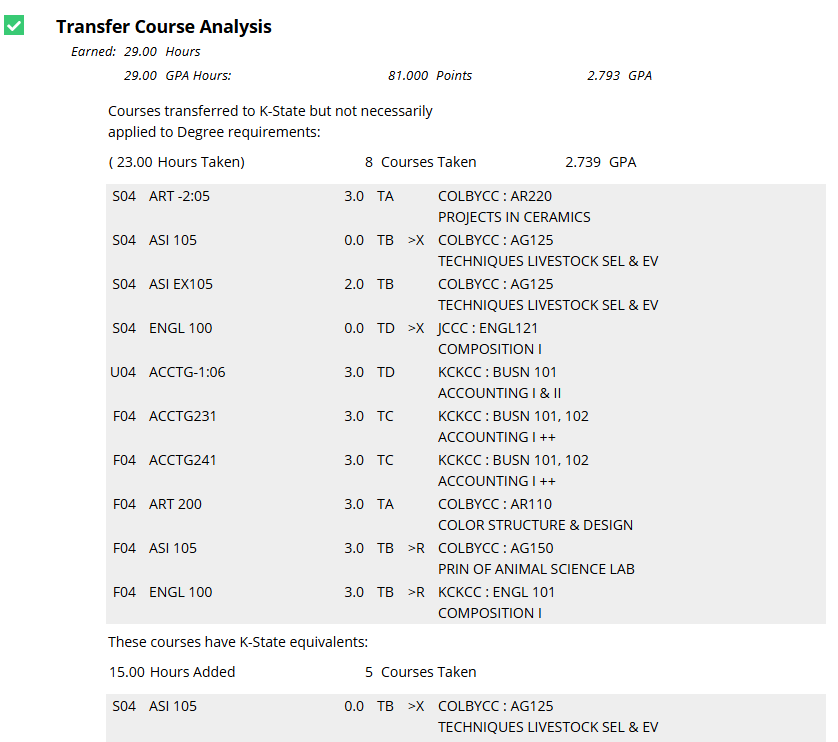- K-State home
- Office of the Registrar
- Systems
- DARS uAchieve
- Resources
- Interpreting the Audit
Interpreting the Audit
A degree audit is a resource that students and advisors can use to help ensure students meet all requirements towards degree completion. Requirements exist all over K-State. There are University, College, program, and other various kinds of requirements that must be met. The audit pulls all of these requirements into a central location for tracking.
A uAchieve audit is built by compling a combination of requirements and sub-requirements.
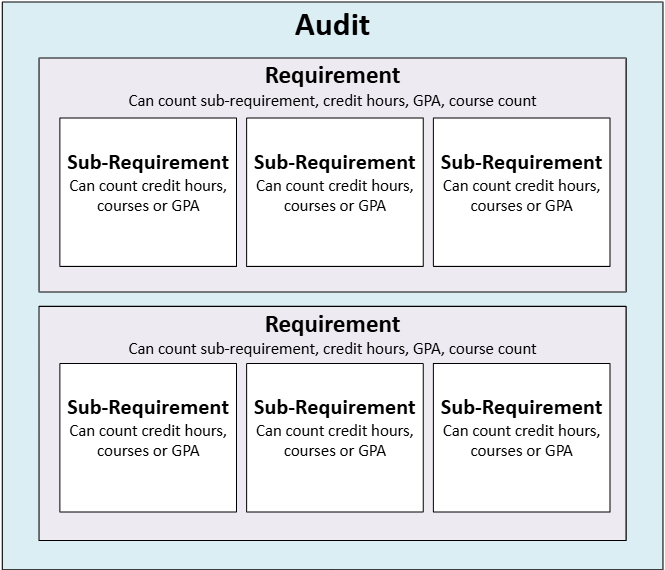
Each requirement/sub-requirement is setup differently to meet the needs set by the curriculum. Requirements are identifable by bold headers in the audit. In the following example, the requirement is 'Kansas State University Core'. Requirements are completed by reaching a certain number of completed hours, completed courses, or completed sub-requirements.

In the above example, the student has earned 19 completed hours and 3 sub-requirements (sub-groups). The student still needs to complete 4 sub-requirements to complete the requirement. It is important to read all of the context and understand the remaining 'Needs' value.
Typically, sub-requirements do the counting of courses/hours. As seen in the sub-requirments under K-State Core, each area requires a certain number of hours to complete the sub-requirement.
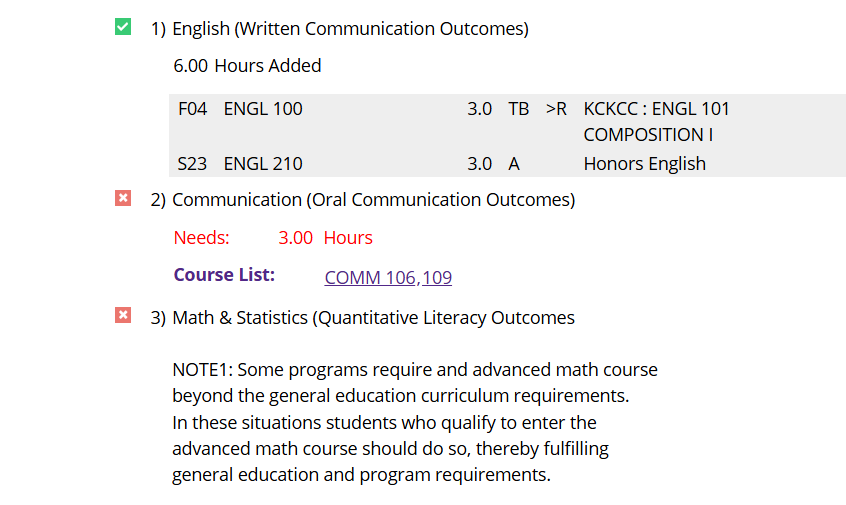
As courses/hours are added, the red 'Needs' lines will decrease. The audit dynamically adjusts each time it is generated to reflect sub-requirement and requirment completion.
![]() = Incomplete requirement/sub-requirement
= Incomplete requirement/sub-requirement
![]() = Complete with In Progress courses
= Complete with In Progress courses
![]() = Complete requirement/sub-requirement
= Complete requirement/sub-requirement
Effective Fall 2024, the Office of the Registrar established a standard for all degree audits to follow a standard flow of requirements. The goal of this is to help students and advisors track the different types of requirements more efficiently when exploring alternative programs. The standard is:
- Degree audit general information/in progress courses
- University Requirements (undergraduate requirements, K-State Core, etc.)
- College Requirements (GPA requirements, orientation courses, etc.)
- Program Requirements (major and elective courses)
- Free Electives (excess courses used to meet total hour requirements)
- Transfer Analysis (a break down of how your transfer courses are used at K-State)
There are two very specific requirement blocks in most all audits. First is the Undergraduate and Graduate Degree Requirements. These requirements are built based on policies in the University Handbook.
Undergraduate Degree Requirements - University Handbook, F121
Graduate Degree Requirements - Graduate Handbook
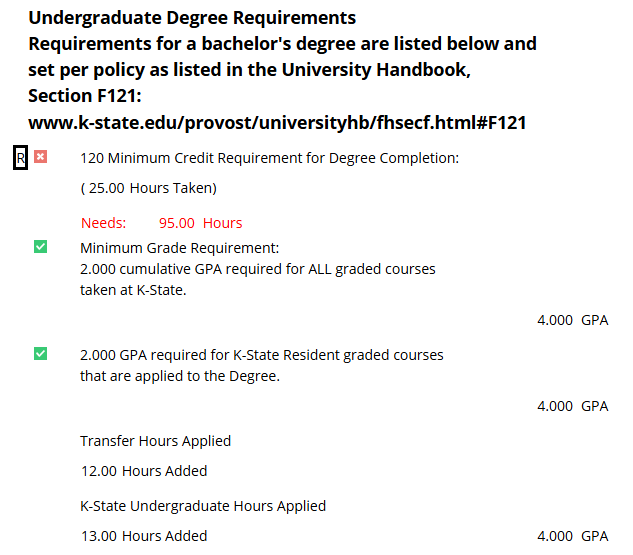
Sub-requirements that are required to be completed will have a completion status (red X, blue dots, or green check) to the far left. Optional sub-requirements do not count towards the overall requirements, but are there as visuals when reviewing degree completion. Examples include 'Transfer Hours Applied' and 'K-State Undergraduate Hours Applied'.
The second requirement block is the general education requirement known as Kansas State University Core. This requirement applies to most all undergraduate programs. It consists of 7 areas that all must be completed by the end of the degree. This requirement is designed to by dynamic to meet students where they are at. In some cases, your advisor may need to work with an internal team to make appropriate adjustments.
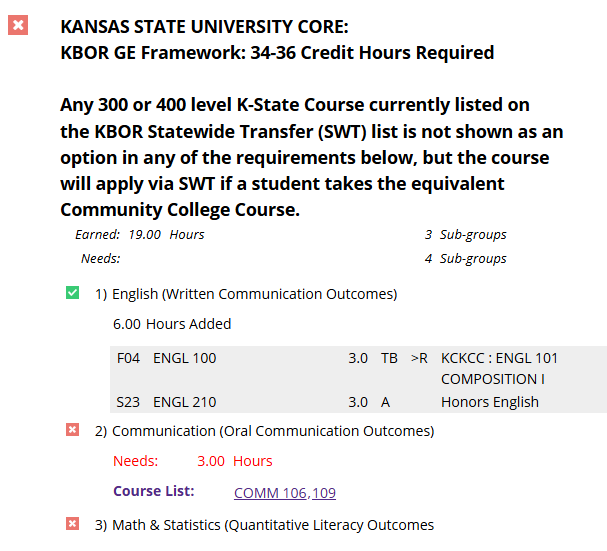
Program requirements are those developed and implemented by your program college and department representatives. In the audit, these are based on the requirements as approved in the University Catalog. These requirements are split into two categories.
Program requirements - Required courses in all programs/majors within the college
Programs - Required courses that are specific to the program/major
The degree audit will never be a perfect reflection of the program listed in the University Catalog. However, we do our very best to align them as much as possible.
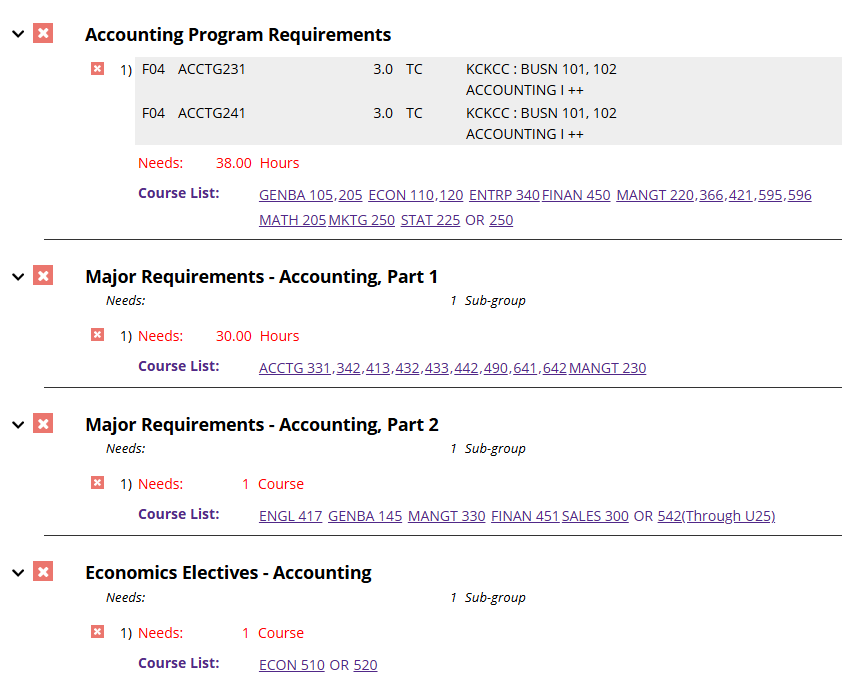
Free Electives is a single requirement used in most all degree audits. This requirement is used to soak up additional credit hours to meet the total hours required for graduation. As the title implies, there is no restriction on what course the student pursues to complete remaining credit hours.

If you transfered courses to K-State, the Transfer Course Analysis requirement will take those courses and categorize the courses based on degree applicability. Categorizes include:
- Courses transferred but not necessarily applied
- Courses that transferred as a K-State equivalent course
- An example of a K-State equivalent course is ASI 105
- Courses that transferred and may apply towards degree requirements
- Courses that transfer and DO NOT count towards degree requirements
- Example is 'NO TRANSFER'
- Courses that transfer but need reviewed by dean's office first
- These include non-equivalent courses. An example is ART -2:05.
